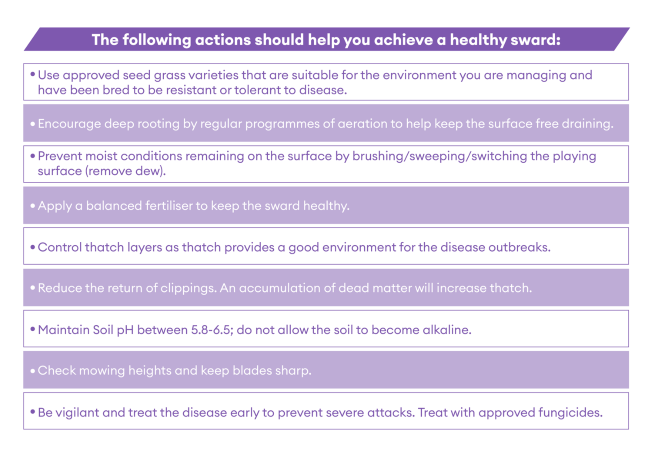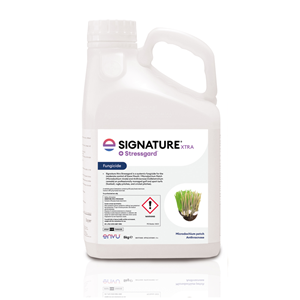Laying the foundations for Autumn turf grass disease prevention
Summer stress in turf, particularly in terms of proliferation of turf grass diseases generally comes to a head during late summer and early autumn, a time of the year when we are likely to get several weeks of heavy dews forming on natural grass surfaces.
These dewy conditions can create conditions favourable for an outbreak of certain turf diseases.
Once you have determined that a real problem exists, and is caused by a living organism, you need to decide what type of organism may be causing the damage. Begin by establishing which plant part or growth stage is showing symptoms.
In sports turf situations the problem is generally associated with distorted growth, seedling diseases and leaf symptoms.
Leaf symptoms are seen in many forms: discolouration (yellowing or shades of green), localised or indistinct patterns, usually indicate a virus; dead areas on leaves can be caused by fungi or bacteria. Necrotic areas caused by fungi may contain hyphae or fruiting bodies, particularly after incubation in a warm, moist environment.
Understanding the specific disease, or the life cycle of the pathogen involved, is necessary to ensure effective controls can be implemented.
Three major factors contribute to the development of a plant disease: a host, a pathogen, and the environment. A plant disease results when these three factors occur simultaneously. If one or more of these factors do not occur, then the disease does not occur. The genetic makeup of the host plant determines its susceptibility to disease. This susceptibility or resistance may be determined by various environmental, physical and biochemical factors. Plant stature, growth habit, cuticle thickness, and stomatal shape are a few physical factors that influence disease development.
The plant's developmental stage may also influence disease development. Pathogens differ in their ability to survive, spread, and reproduce. Environmental extremes of temperature, light, or moisture can accentuate many diseases. Moist conditions below 15.5 degrees celcius are ideal for many fungal pathogens.
Understanding the disease cycle is important when considering control options. Learning the chain of events that contribute to a disease helps identify the weakest links. Control measures can then be used to break the cycle.
Grass Disease Cycle:
The pathogens that cause these diseases are always around and often lying dormant in the thatch layer waiting for the ideal conditions in order to become active. Once these spores are activated, and have found an acceptable host, they are able to grow and reproduce themselves, spreading new spores and infections to other areas of turf. This cycle continues whilst the right conditions prevail.
Spores are spread by wind, water, and by traffic. It is during periods of fluctuating weather, particularly changes in temperatures, that an outbreak of disease takes place.
The main management tool for controlling diseases is, by definition, an Integrated Pest Management strategy (IPM) that comprises a number of tasks and checks providing a comprehensive approach to controlling and reducing the incidence of disease outbreaks.
It is well documented that healthy plants are better equipped to combat disease and mitigate stress. Over the years there have been many independent trials undertaken that show that a healthy grass plant can resist and cope better than one that’s in poor health.
Keeping the sward healthy and reducing the conditions that favour disease will be the first priority to keep disease from your turf.



